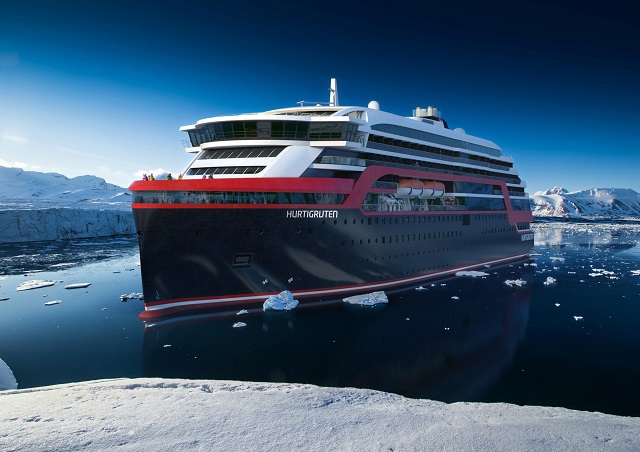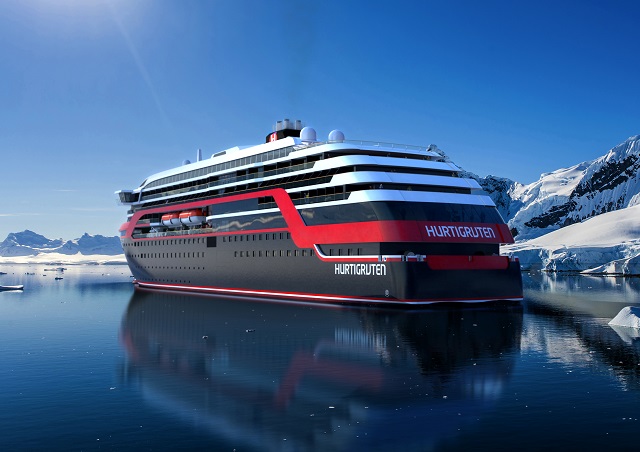Hurtigruten Readies Hybrid Cruise Ships
The Norwegian explorer cruise line, Hurtigruten, has two new hybrid expedition ships under construction.
The new 140-meter (460-foot) ships represent the largest singular investments in the history of Hurtigruten. The contract with Kleven includes the construction of two ships with a capacity of 530 beds. The contract includes an option for two more ships.
The decision to invest in hybrid technology is a milestone in Hurtigruten’s goal of sailing fully electric expeditionary ships in the Arctic and Antarctic. The ships, constructed at Kleven Yards in Norway, will be the world’s first expeditionary ships with true hybrid propulsion.
The technology, in combination with the construction of the hull and effective use of electricity on board, are expected to reduce the fuel consumption and CO2 emissions from the ships by 20 percent. This amounts to more than 3,000 metric tons of CO2 per year, about the same as the yearly emissions of 5,540 new cars.
“The future of shipping is, without a doubt, silent and emission free,” says CEO of Hurtigruten, Daniel Skjelda. “We will use our new expeditionary ships as groundbreakers for this new technology and show the world that hybrid propulsion on large ships is possible.”
The hybrid solution was developed by Rolls Royce. In addition, Bellona, a non-profit organization working to meet and fight climate challenges, have been central to the project.
“This is an historic day for Norwegian shipping and for Norwegian maritime technology,” says founder and president of Bellona, Fredric Hauge. “Battery powered propulsion in ships this size shows that batteries are on board to stay. This represents a huge reduction in emissions from shipping, and it is only the beginning.”
 The hybrid ships are to be constructed in two phases:
The hybrid ships are to be constructed in two phases:
Phase 1: A battery powered auxiliary engine will provide large reductions in fuel consumption for “peak shaving.” This solution is installed on the first expeditionary ship ready in 2018.
Phase 2: If the technology is ready, large batteries will be installed that provide the possibility of fully electric sailing across longer distances and over longer periods of time. This propulsion will be used when sailing into fjords, at port and in vulnerable areas. The goal is to install this technology in the second ship which will be finished in 2019.
The goal is also to retrofit the first ship with the same technology.

that matters most
Get the latest maritime news delivered to your inbox daily.
“To be able to sail using only electrical power is not only a great benefit for the environment, but it will also enhance the impact of experiencing nature for the guests,” said Skjeldam.
The investment in new technology will have a total cost of 124 million NOK ($15.1 million). Enova, a Norwegian government enterprise responsible for promotion of environmentally friendly production and consumption of energy is contributing to the project with 45.1 million NOK ($5.5 million).

